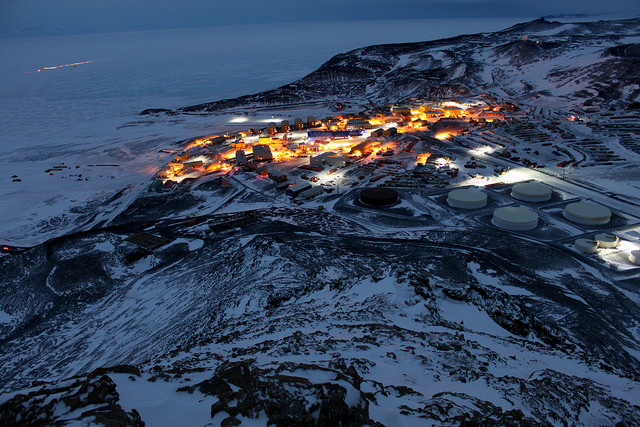In a recent opinion piece with Tony Press, I mentioned that last November, an RAAF C-17A Globemaster delivering heavy lift cargo flew from Hobart to Australia’s Wilkins runway near Casey Station in Antarctica.
The flight marked a new era of logistics co-operation between the Australian Antarctic Division and Defence, although the RAAF have long been involved down south.
As documented in David Wilson’s book on the history of the RAAF and Antarctica, when Sir Douglas Mawson led a scientific expedition to the cold continent in 1929–30, and again in 1930–31, he took with him a Moth floatplane and two RAAF pilots to assist in exploration.
In December 1935, another air force party was shipped south, this time with two RAAF aircraft on board, on an eight-week mission to locate an American explorer and his pilot who had gone missing while attempting to fly across the icy continent.
In 1955, the RAAF formed a special Antarctic Flight, consisting of two Auster Mk 6 aircraft and personnel, to meet the Australian National Antarctic Research Expedition’s (ANARE) needs for dedicated air support at the major research station established at Mawson.
Initially the flight was maintained full-time on the ice, with the men staying until replacement crews arrived on annual ANARE resupply vessels. This practice ceased in 1960 after a Dakota was lost to cyclonic winds. During 1962 and 1963, the ANARE resupply vessels brought with them two RAAF Beaver floatplanes for short-term operations.
Protecting our sovereign interests, exercising jurisdiction and being able to engage in search and rescue and other international efforts are particularly demanding tasks for Australia in the Southern Ocean in view of the distances involved, sea conditions and limited permanent presence.
The tasks require both surveillance of ocean areas and the ability to respond to any incident that might arise.
Response requires a surface vessel, and that’s where we’re seriously lacking at present: neither the Customs’ Cape-class nor Navy’s likely Armidale-class replacement vessels are suited for operations in the Southern Ocean.
As a Senate report on Antarctica conveyed in October 2014:
‘The Southern Ocean should not be the poor cousin in Australian defence and border protection. Consideration of the needs to our south should factor into decisions about the most practicable acquisition of defence patrol resources. The ADF’s present project to update its offshore patrol fleet appears to present one timely opportunity to do so, and is worthy of further examination.’
This year’s Defence White Paper should set out the priority accorded to Antarctica and Southern Ocean interests and how Defence can support our national interests in maritime enforcement, scientific research, emergency response, search and rescue, logistic support, and intelligence, surveillance and reconnaissance (ISR).
Those are areas where there’s likely to be increased calls for ADF services, even though Defence won’t normally be the lead agency.
Relevant Defence capabilities would include Navy’s hydrographic assets (eastern Antarctica’s waters aren’t well charted), HMAS Choules (the RAN’s only ice-strengthened vessel, albeit with a limited ability to operate in light ice conditions), C17 aircraft operation into Antarctic airstrips (Hobart’s runway extension over the next two years will allow extra payloads), AP-3C for search support, future UAVs—like Triton—for ISR, and Army personnel for surveying operations.
There should be greater provision for the ADF to be involved in our Antarctic programs, as was the case several years ago when an Army officer headed up Casey Station.
The Australian government has recently announced a new icebreaker due for delivery in the 2019–2020 season. It’ll be able to conduct Southern Ocean research, act as a rescue platform and deliver fuel and cargo to Australian stations. There’s no reason why RAN personnel couldn’t be seconded to play an operational role on re-supply and scientific voyages.
Defence has a range of capabilities relevant to Antarctica and the Southern Ocean. It’s to be hoped that this year’s White Paper will set out where the government sees Defence’s possible contributions in advancing our polar interests.


